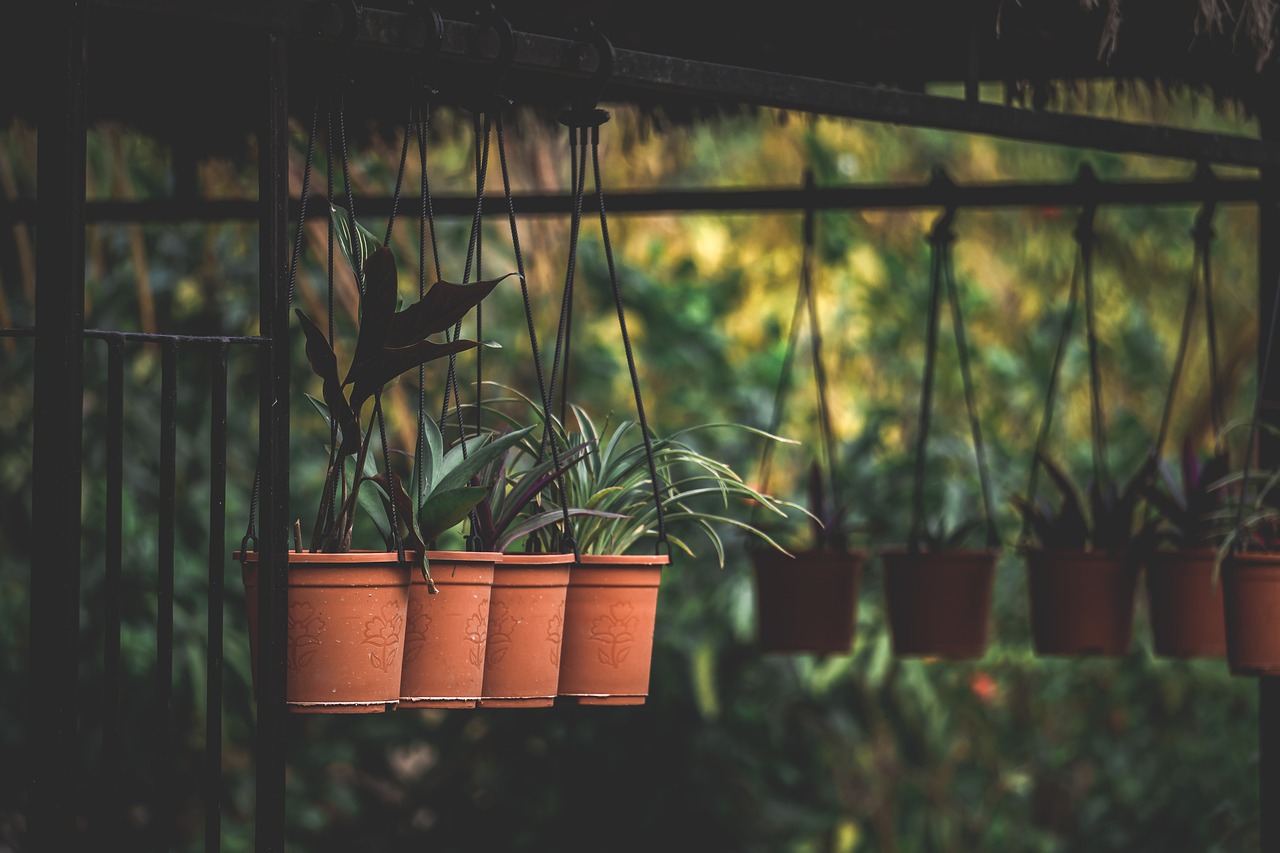Supercharge Your Greenhouse Farming: The Power Of Year-Round Production

Greenhouse Farming
Master greenhouse farming by boosting crop yields, slashing downtime, and harvesting fresh produce even in winter months. Effective greenhouse farming lets growers extend their season, delivering nutrient-rich vegetables and herbs long after outdoor gardens fade. Discover how savvy growers stay productive year-round—because great gardening never sleeps.
Cheatsheet: Maximize Greenhouse Crops All Year
🌡️ Control Temperature & Humidity
- Night: Keep ≥ 60°F (16°C)
- Day: Stay below 85°F (29°C)
- Ventilate: Avoid fungal outbreaks, regulate moisture
- Humidifiers: Target 60-70% for greens, 50-60% for fruiting crops
💡 Optimize Light
- LED grow lights: 12-16 hrs/day winter
- South-facing orientation: Maximize sun
- Reflective surfaces: Boost coverage
🌱 Crop Rotation & Succession Planting
- Alternate leafy greens, tomatoes, peppers, herbs
- Stagger plantings every 2-4 weeks
- Boosts yield, prevents soil exhaustion
🧑🌾 Soil & Hydroponic Management
- Test soil quarterly (pH 6.0-7.0)
- Compost, organic matter: Enriches beds
- Hydroponics: 40% faster growth, up to 90% water savings
- Rotate nutrient solutions
🦠 Pest & Disease Prevention
- Integrated pest management: Sticky traps, beneficial insects
- Disinfect tools, benches monthly
- Remove diseased plants fast
🍅 Health, Nutrition & Food Security
- Grow vitamin-rich greens, berries, herbs year-round
- Reduce grocery trips, ensure fresh supply
- Zero-pesticide produce
🛠️ Tools and Products You'll Need
- Thermometer & hygrometer
- LED grow lights (full spectrum)
- Automatic vent/fan system
- Drip irrigation or misters
- Compost or organic fertilizers
- Sturdy shelving or benches
- Plant supports & trellis
🚀 Quick Steps for Year-Round Production
- Install temperature/humidity controls
- Set up grow lights & reflective panels
- Start with fast-growing greens & herbs
- Rotate crops monthly
- Monitor pests, adjust controls seasonally
- Harvest and replant continuously
Why Year-Round Greenhouse Farming is Worth the Effort
Back when I first dabbled with greenhouse farming, winters felt restrictive, and my gardening ground to an uninspired halt. Frost was the uninvited guest that crashed my horticultural party every year.
Then I discovered the magic of year-round greenhouse farming, and my view changed completely. Keeping crops vibrant through each season became achievable and deeply satisfying.
The Beauty of Consistent Harvests
Imagine pulling lush tomatoes in February, crisp cucumbers in December, and delicate salad greens throughout the darkest winter months. This steady bounty turns your greenhouse into a dependable pantry.
"A well-managed greenhouse can yield up to 6 times more per square foot than traditional outdoor farming methods." — University of Alaska Fairbanks Extension Service
Consistent harvests mean dependable food supply and improved self-sufficiency. Nothing compares to the flavor of homegrown produce, especially when it's lovingly plucked in midwinter.
Controlling Your Greenhouse Climate for Optimal Results
The secret sauce lies in managing your greenhouse environment effectively. Proper temperature and humidity controls are your allies in pushing past seasonal limits.
- Temperature: Aim for daytime greenhouse temperatures between 65-80°F (18-27°C), while nighttime should hover around 55-65°F (13-18°C). Installing thermostats and automated heating was a transformative upgrade to my own growing space.
- Humidity: Too moist—fungi celebrate; too dry—plants wilt. Target a humidity level of about 60-80%. Consistent ventilation and fans help maintain balance.
- Light: Supplemental lighting compensates for short winter days. Full-spectrum LEDs mimic sunlight effectively and consume less energy than traditional bulbs.
Crops That Thrive in a Year-Round Greenhouse
Choosing the right plant lineup is vital for top-notch results. Cool-weather champions like kale, spinach, lettuce, Swiss chard, radishes, and carrots thrive effortlessly through winter.
Warmer-season delights—think tomatoes, peppers, eggplants—require additional heat and lighting but reward your efforts richly. Experiment and diversify to maximize harvest periods.
Mastering Crop Rotation and Succession Planting
I've learned through trial, error, and occasional frustration that planning is everything. Rotating plant families annually discourages pests and disease buildup.
Succession planting—sowing seeds every couple of weeks—secures an uninterrupted production cycle. This steady rotation keeps your greenhouse endlessly productive without overwhelming workload bursts.
The Joy of Off-Season Gardening
There's genuine delight in stepping from cold winter air into your thriving greenhouse sanctuary. Witnessing vibrant life flourish against seasonal odds connects you intimately to the cycles of nature.
"Gardening is an active participation in the deepest mysteries of existence." — Terence McKenna
Greenhouse farming year-round offers that rare blend of practicality and wonder. Engage fully, and your reward is fresh produce and endless gardening adventure—regardless of calendar pages.
Frequently Asked Questions About Greenhouse Farming
How can greenhouse farming enable plant growth throughout colder seasons?
Greenhouse farming creates a controlled environment by capturing sunlight and maintaining consistent warmth. Efficient insulation, carefully regulated ventilation, and effective heating systems maintain steady temperatures ranging between 60°F to 80°F (15°C to 27°C), allowing plants to thrive even during winter months.
Which crops thrive best in greenhouses year-round?
Crops such as tomatoes, cucumbers, lettuce, spinach, peppers, and herbs flourish within greenhouse conditions. These plants respond positively to controlled humidity, temperature stability, and optimized sunlight exposure, enabling continuous harvest cycles and improved crop quality.
What techniques effectively control humidity inside a greenhouse?
To regulate humidity effectively in greenhouse farming, growers install adequate ventilation systems like exhaust fans and intake vents. Additional strategies include utilizing drip irrigation to reduce excess moisture, spacing plants appropriately, and investing in moisture-absorbing materials to prevent fungal growth and plant diseases.
How do growers maintain optimal greenhouse temperature consistently?
Maintaining ideal temperatures involves precise integration of thermostatically-controlled heating systems, automatic window vents, shade cloths, and thermal curtains. Consistent greenhouse farming temperatures, usually between 60°F and 80°F (15°C and 27°C), promote stable plant growth and boost productivity.
What sustainable practices can growers incorporate into greenhouse operations?
Sustainable methods include implementing rainwater harvesting systems for irrigation, installing solar panels for renewable energy, composting organic waste, and employing beneficial insects as natural pest control. These eco-friendly practices ensure long-term environmental health and foster productive greenhouse farming.
How can pests effectively be managed within greenhouse environments?
Integrated pest management (IPM) techniques provide balanced pest control for greenhouse farming. This approach combines biological control agents such as ladybugs and predatory mites, preventative sanitation practices, regular monitoring, and selective organic pesticide applications to safeguard plant health.
What role does lighting play in enhancing crop productivity in greenhouses?
Efficient lighting setups play an instrumental role in greenhouse farming by supplementing natural sunlight. Utilizing full-spectrum LED grow lights extends daylight hours, accelerates plant growth, and increases crop yields, especially during shorter winter days when natural sunlight is limited.
Greenhouse Farming brings control, consistency, and creativity to the table. With the right setup, you can keep crops coming—no matter what the weather throws at you. The real draw? Year-round harvests and fewer surprises. Tinker with the environment, and you’ll see better yields and healthier plants. If you’re curious about soil health and sustainability, consider exploring no-till farming techniques inside your greenhouse. The bottom line: Greenhouse Farming rewards those who pay attention, adapt, and keep learning. There’s always another season around the corner, and with the right approach, every one can be a good one.
Pro Tips to Optimize Greenhouse Productivity Year-Round
Strategic Plant Pairings for Yield Efficiency
Companion planting maximizes limited greenhouse space, boosts yields and reduces pest pressures. Pair basil with tomatoes for enhanced flavor and pest deterrence; intercrop radishes between slower-growing carrots for quicker harvest cycles; combine nitrogen-rich beans with heavy feeders like cucumbers to enrich soil naturally.
Optimizing Microclimates for Crop Health
- Thermal Mass Placement: Use water-filled barrels or stone walls to store daytime heat, releasing warmth at night and stabilizing greenhouse temperatures between 65-75°F (18-24°C).
- Vertical Zoning: Cultivate heat-loving plants like peppers on upper shelves where warmth accumulates; cooler-tolerant greens thrive at lower heights.
- Air Circulation Tactics: Position fans diagonally to stimulate even airflow and deter fungal pathogens, aiming for gentle, continuous movement rather than strong gusts.
Maximize Nutrient Density Through Soil Health
Boost crop nutritional value by enriching soils organically with compost tea, worm castings, seaweed meal and cover cropping cycles. Regular soil testing helps maintain optimal pH (typically 6.0-7.0 for most vegetables), mineral balance and biological activity.
Fine-Tune Light Exposure for Nutrient Enhancement
Natural sunlight increases crop vitamin content—tomatoes under full sun contain 30-40% more vitamin C compared to shaded fruit. Strategically pruning foliage enhances direct light exposure, improving produce flavor, color and nutritional profiles.
Enhance Food Independence Through Succession Planting
- Crop Scheduling: Sow fast-maturing crops (leafy greens, radishes) every two weeks to ensure continuous supply and efficient greenhouse space utilization.
- Space Rotation: Rotate plantings among raised beds to minimize pest and disease buildup, sustaining year-round productivity.
Find out which plants will thrive in your garden!
Answer a few fun questions and get custom plant recommendations perfect for your space. Let’s grow something amazing together!

start your season





